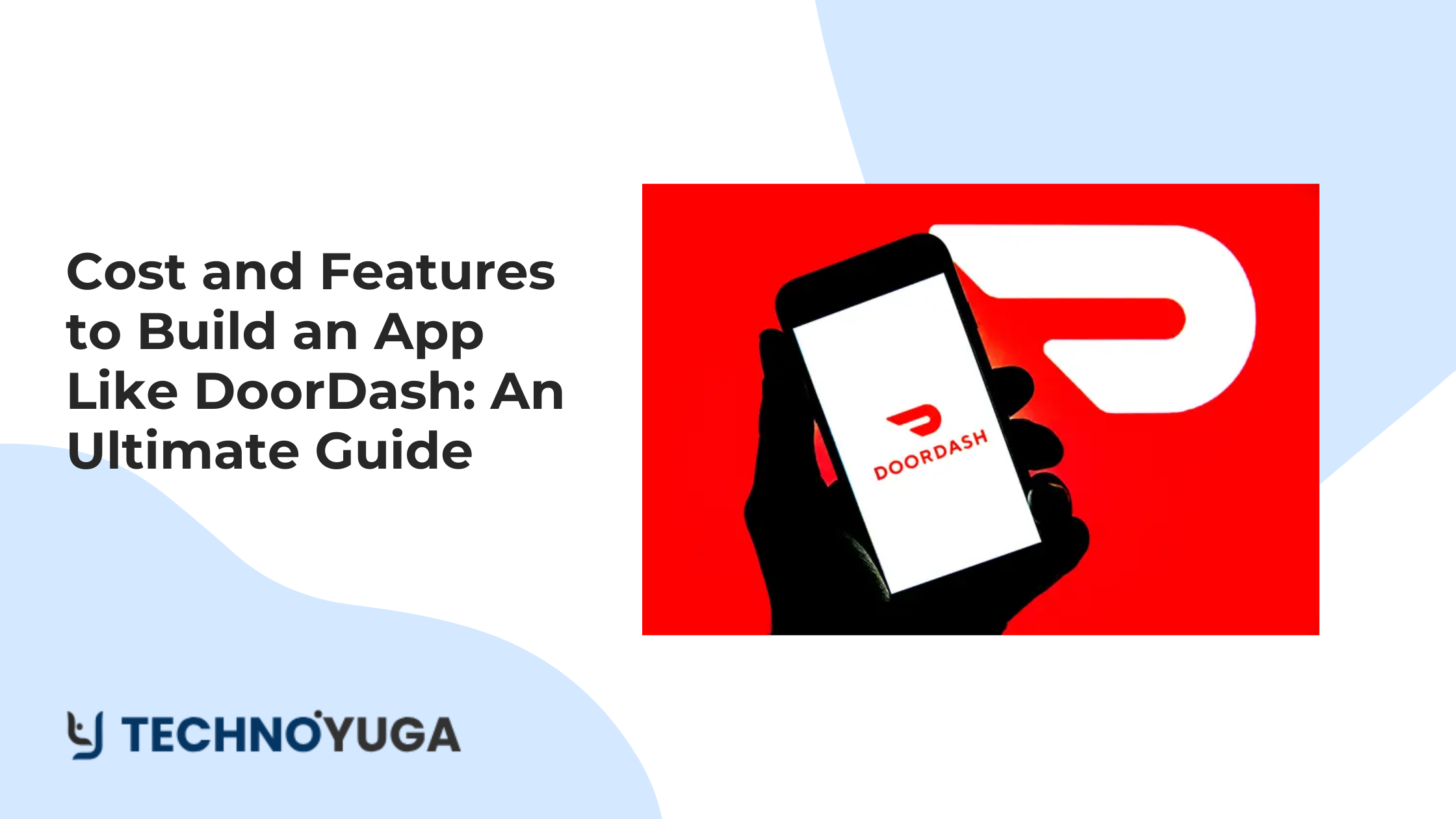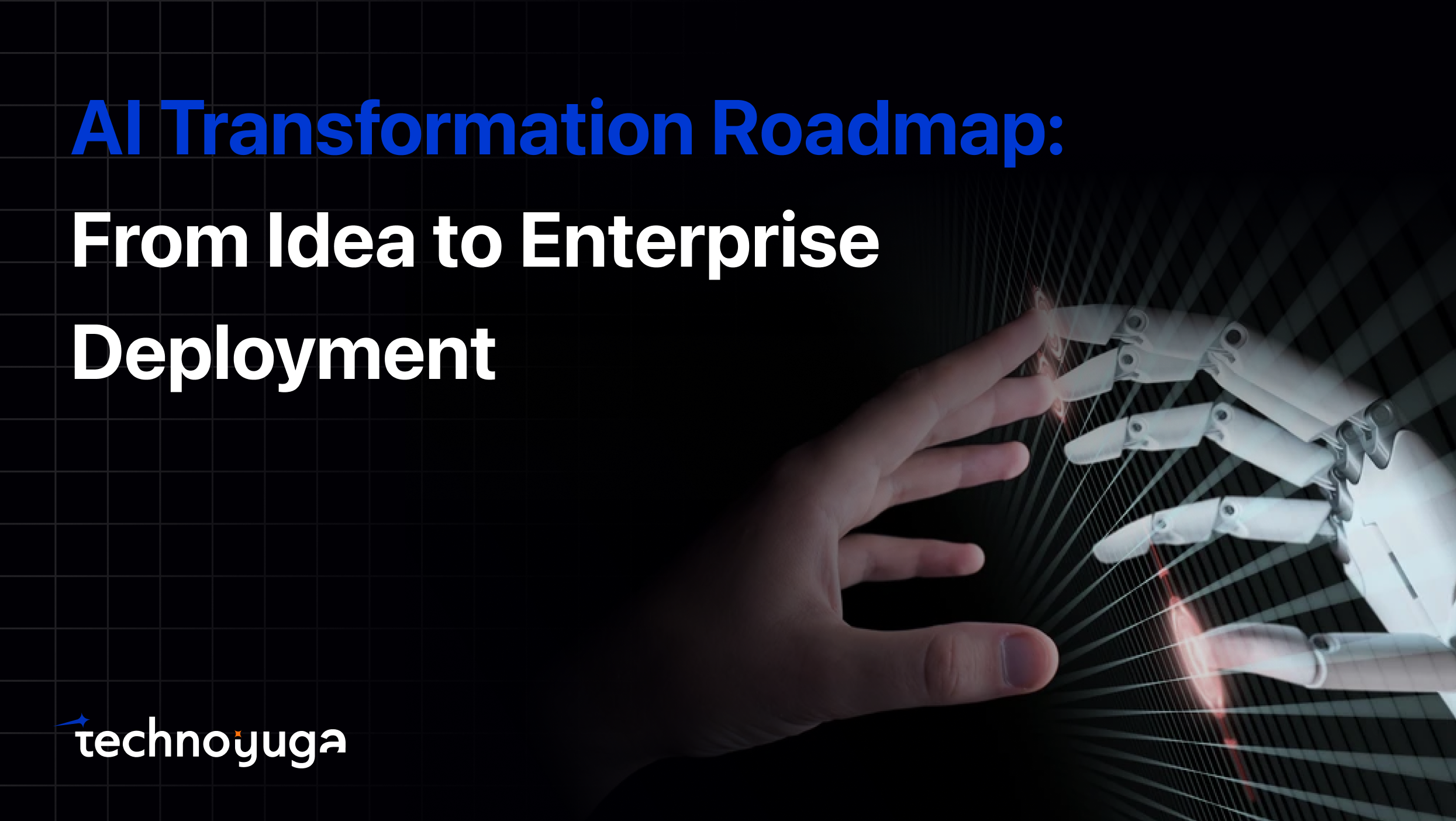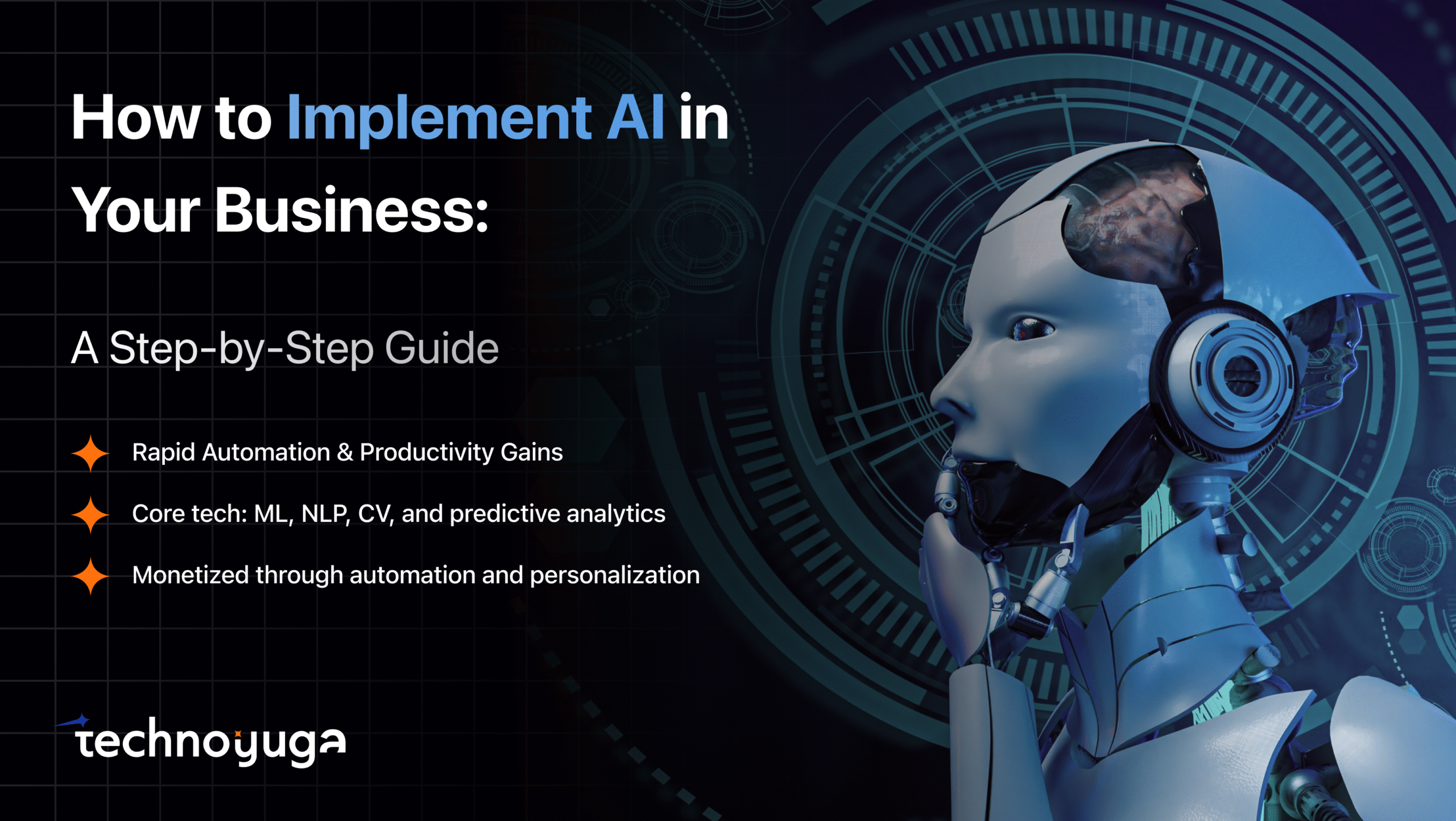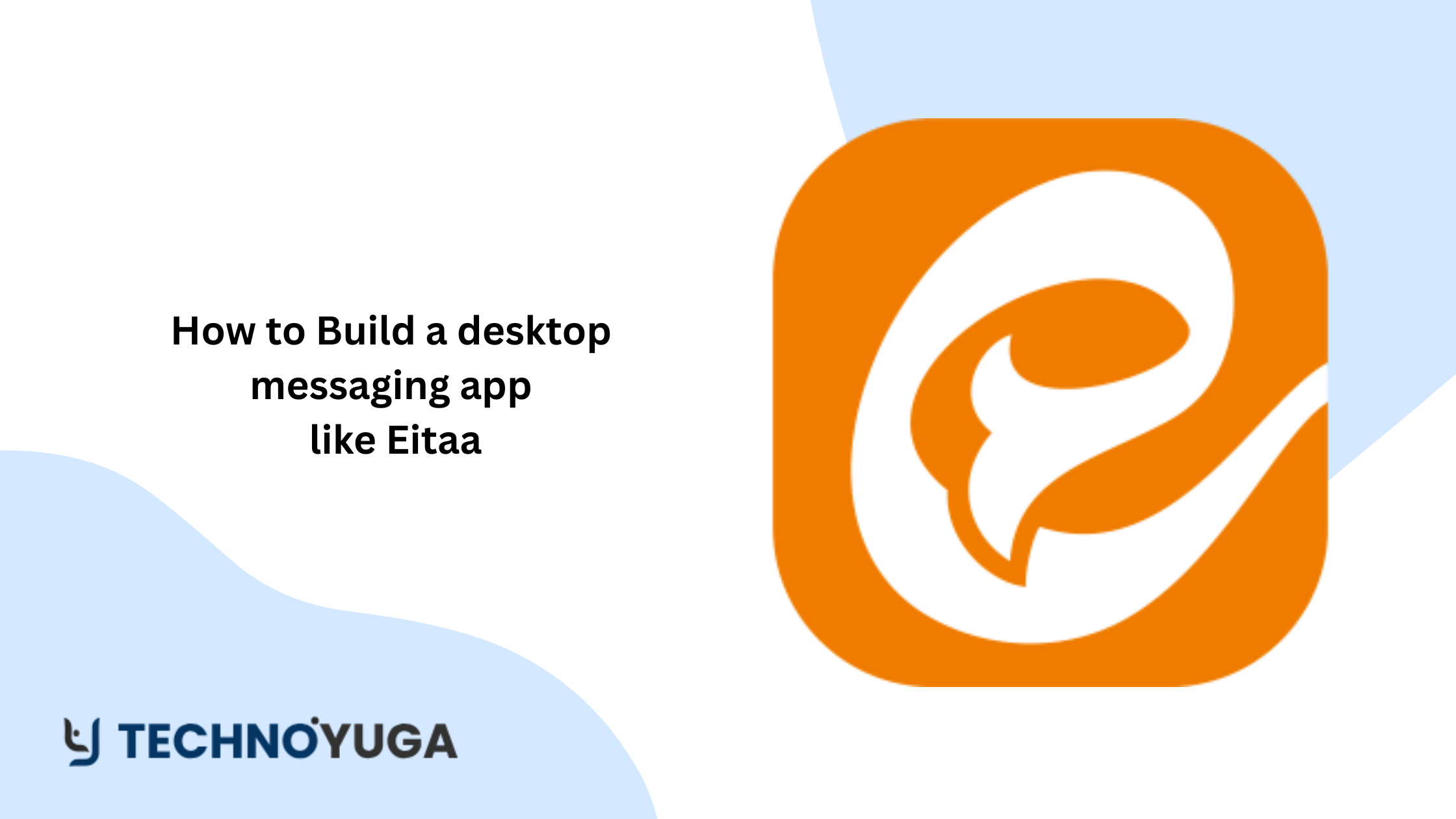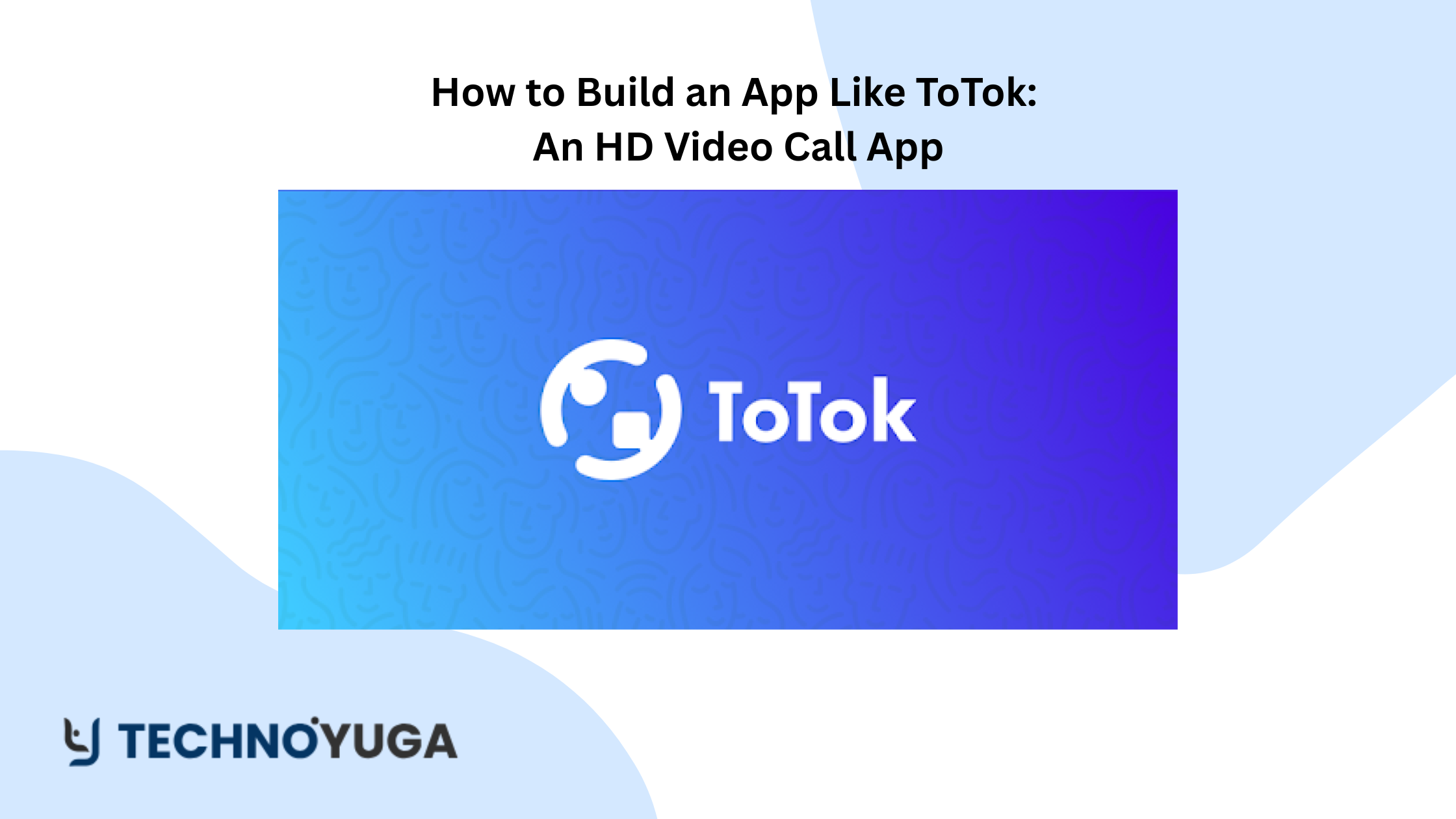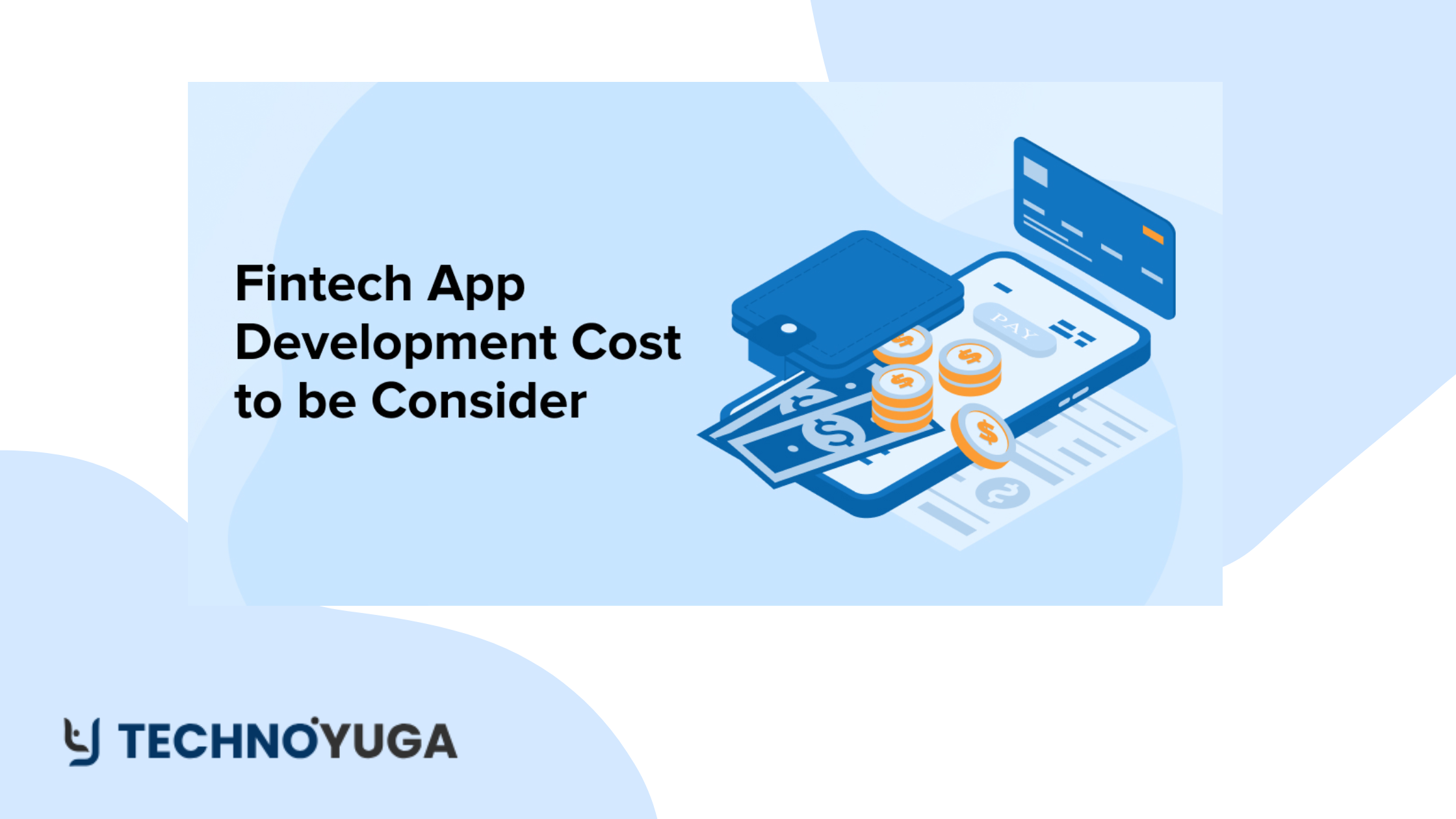Gone are the days when one had to order food in advance; now, companies provide easy solutions at one’s disposal at the touch of a button. Whether it involves getting food, groceries, or any other services, these apps ensure that we hook up with a variety of service providers almost immediately. The best of these platforms is DoorDash, one of the leading food delivery applications, which has provided a good model of how the delivery on demand business should be carried out. This app inspiring many to Build an App Like DoorDash.
Creating an app such as DoorDash is not about developing competition to other popular food delivery platforms; it’s about implementing a new concept that is becoming more and more vital in modern society. Therefore, by implementing the right features and developing a concrete development plan, an application similar to DoorDash may be highly profitable and contain large profits on the investments.
In this guide, you will learn all the fundamentals of creating an app similar to DoorDash. Here we will outline the key features, the needed tech stack, and give a detailed estimate of costs to guide you in your project.
So, keep reading!
Understanding DoorDash: A Brief Overview
DoorDash is an online food ordering and delivery app that enables consumers to order their meals or EVE consume food from restaurants or other eating places of their choice. Overview Meal delivery services have been on the rise in recent years and thus has invited some of the well-renowned giants in the business such as Dirty Foods Co., Inc which was established in the year 2013. DoorDash’s goal is to help local economies thrive by offering businesses a platform to extend their reach, while also making it possible for people to enjoy their food at the comfort of their own homes.
The application offers entering the location, choosing among the numerous restaurants, selecting the preferred dishes, and order placement. After an order is placed, a DoorDash contractor, referred to as a ‘Dasher’ makes the purchase and delivers the food to the buyer. It also has a tracking option to allow users to see the progress of their order from preparation to delivery.
The company has acquitted itself well and entrenched itself as one of the major players in the food delivery space. Currently, it has reached the saturation level of 65% shares in the U.S. food delivery market, in terms of orders. Currently, DoorDash is in more than 4000 US cities, Canada, Australia, and Japan where it has been able to affiliate with over 450000 merchants.
It is important to note that in 2022, DoorDash had reported revenues that stood higher than $6 billion which also proves the significant growth of the firm and its market domination. Through technology and extensive networks of Dashers, merchants, and customers, DoorDash has been able to maintain a competitive advantage despite it being a relatively new company in an ever-growing food delivery market.
Core Features You Should Consider To Build an App Like DoorDash
User Side:
User Registration & Login
This is the feature that enables a person to sign up or sign in to the mobile application. It has the option of registration through an email address or phone number, which can also include the usage of a social network. These can include things like account creation, ability to visit members only sections containing various options of personalization, choices for storing and history of their orders. This particular step is crucial to prevent possible threats and help users to control their profiles, addresses, and various methods of payment. You must include this feature when you build an app like DoorDash.
Search & Filtering Options
A range of search and filtering options enables the user to locate the restaurant or the dish of their preference. One can look up a restaurant by name, type of cuisine, or a particular dish and then refine the search using such additional features as star ratings, distance, delivery time, etc. It allows users to quickly scroll through a list of hundreds and even thousands of items to get precisely what they want.
Restaurant Menu & Details
This feature gives a detailed list of all food items served in each restaurant by giving their descriptions, prices and pictures of the meals. They also have access to details of the eating joint such as the operational time, location, its star rating, and the time it takes to deliver meals. It assists users in their decisions on what to order, and enables them to make the right decision on which meal to order in order to meet their requirements fully.
Order Placement & Customization
This interactive feature allows the users to order various items from the available menu list of the restaurant with their preferred options. This may involve selecting appropriate portion sizes, increased additions of supplementary ingredients or providing more specific instructions to the restaurant. The process of ordering seems almost simplistic and easy to understand; users can easily view their choices, enter the cart, and proceed to payment.
Real-time Order Tracking
Online order tracking enables users to track the status of their order from preparation and delivery. The app is for customers showing them the progress of food preparation, pick up by delivery partner, and delivery to their location. This particular feature brings about a sense of order and reliability, where users fully understand when their food is to arrive.
Payment Gateway Integration
This feature enables users to make payments for orders by completing transactions directly within the app using either card or e-wallet, or cash payment on delivery. It is also important to use secure methods of payment so that customers are guaranteed of safe means during the entire purchase process.
Ratings & Reviews
In the order confirmation and delivery, the user can also provide a rating based on the restaurant and delivery experience and can leave feedback. Ratings and Reviews assist others while giving feedback on restaurants to make sound decisions. This feature helps to build the trust of users of this application and put pressure on restaurants to deliver their best services.
Order History & Reorder
Used in combination with the other features, order history brings the best convenience by showing all past orders and enabling users to repeat the most popular orders with a few taps. Return customers can access earlier orders, descriptions, and reorder products without a search due to saved information. It is convenient for individuals who often order similar or the same foods since it reduces the amount of time spent to make an order.
Restaurant Side:
Restaurant Dashboard
The Restaurant Dashboard can be defined as the panel containing all information and tools necessary for restaurants ordered in a DoorDash-like app. It offers a clear and smooth navigational structure to enable the restaurant owners and managers to manage all aspects of the delivery service. They use this to track orders that come in, edit the menu to reflect what is available, follow delivery services, and even interact with customers or delivery agents. It is a centralized place that enables restaurant owners and operators to manage their business effectively and appropriately on the platform.
Menu Management
Under the ‘Inventory & Orders’ section there is Menu Management which enables restaurants to update and customize their menu on the app. With this feature, they can create new dishes, change their prices, post photographs as well as include additional information such as special instructions or items used. Restaurants can also use these tools to help promote specific entrees or develop special promotional options which may bring in more business. This flexibility helps update the online menu at any one time to reflect the restaurant’s current stock and push sales of its special dishes.
Order Management
Order Management refers to the handling of orders in restaurants, encompassing all the stages of taking and fulfilling orders. It creates an order which shows up in the restaurant’s system so that its staff can take the order, cook, prepare and deliver it once it is ready. This feature is very helpful in having proper coordination between the kitchen and delivery drivers to serve the customers in the best way and in time. It aids restaurant organizations retain superior service quality, thus supporting customers’ expectations with minimal provocation of service mishaps or delays.
Analytics & Reporting
Analytics & Reporting It will be these two features that will give the restaurants some information regarding their performance in the application. This feature provides the sales, order activities, preferred customers and many other important factors and sales reports. Therefore, from such data, restaurants can establish trends, modify menus, adapt prices, and enhance their operation. This tool enables restaurant owners to ensure they reach informed decisions that will spur growth, customer satisfaction, and in equal measure boost the profitability of the business.
Payment Management
Payments in the app deals with the payment processing as well as the cash transactions between the restaurant business, clients, and the application itself. This feature helps the firm to ensure customers make secure and prompt payments for the orders placed with them.
Consumers can check food prices, get a receipt of the restaurant from where they ordered and sort out refunds or/and issues through the app. It also enables restaurants to have multiple payment methods like credit cards or through digital wallets, which will aid customers. Payment Management is the aspect that is made easy hence reducing the burden restaurants have to face while focusing on food quality and neatness.
Delivery Driver Side:
Driver Registration & Login
This feature facilitates the process through which the delivery drivers, commonly referred to as Dashers, can create an account and sign up through the use of the app. They include details like name, contact address, and the type of IFS they are in case of an accident.
Following registration, the drivers can proceed to login into the app through their details as a way of beginning the delivery exercise. There are normally some identity and background checks to ensure the driver is qualified to work as a Dasher. The registration/checking-in and logging-in processes should be integrated and easy but safe to ensure drivers are quickly launched on the road.
Order Acceptance & Rejection
After placing a delivery order, any driver in the vicinity gets an alert containing information together with the restaurant location and delivery destination. The order is then presented to the driver in which they can accept or decline as preferred. When an order is taken, the driver assures to complete the order by delivering the food in a given time. If they refuse it, the order is on the next driver. This feature helps the drivers to balance workload and increase the amount of money they make by choosing orders from the list.
In-App Navigation & Route Optimization
This one offers drivers instructions from the restaurant to the customer’s place to help him avoid getting bored. It is also linked with GPS and mapping services so one can have a navigation system for real-time information and thus help the driver avoid traffic and get to the destination as quickly as possible.
Route optimization enables timely delivery to clients with minimized time on the road through efficient identified routes. This option promotes the delivery process by advising the drivers on the best ways to get to the delivery points, which helps to have the food delivered hot and fresh besides making the drivers happier because they do not have to spend a lot of time on the road.
Earnings & Payment Management
This feature helps drivers to monitor their earnings based on the delivery made per day, week, or month as well as the total earning. It also contains information on tricks, incentives, and progressive offers. General tasks, aimed at maintaining efficiency and ensuring that payment for services rendered by the driver is processed immediately, and at the shortest time possible in most cases, this involves direct bank transfers to the drivers’ accounts.
Some also have the feature where you can get your earnings directly cashed out for a few bucks. This feature offers the ability to adjust costs and provides drivers with clarity about their financial situation, so they can plan work and earnings.
Delivery History
Delivery history is one of the fabulous features through which a driver can see all the deliveries they have done. They point to finer details of each delivery, including date, time, the amount of earnings, and feedback from the clients. Such information allows the drivers to monitor their performance levels, recall their work process, and analyze areas they should enhance.
Furthermore, it offers a contact point whenever there is a problem, like in terms of legal issues, dispute, questions on payment, among others. This way the driver is well prepared and informed when it comes to the work that they needs to do.
Admin Panel:
User Management
User Management also enables the admin to manage all the customer’s accounts without interfering with their individual operations. It implies user management, monitoring their activity, and solving the problem or handling complaints regarding their profiles. An admin can also set user rights and access levels to meet each person’s and grouping’s requirements.
This feature is very vital for the security and management of the platform as it aids in overseeing the actions of the users, solving conflicts, and addressing concerns once in a while. It also enables the management of promotion’s activities for the users of the app like offers and discount offers.
Restaurant Management
With Restaurant Management, the admin is able to manage the addition and deletion of the partner restaurants as well as monitor them. Here the admin has the access to manage restaurant profiles, menu list, price list and the working hours. The admin can also monitor restaurant sales, thus it is able to meet set quality standards and customer satisfaction.
Thereby, the admin will be able to provide users with the variety of restaurants and opt for other appealing options. It also assists with the handling of orders and service for a given restaurant and dealing with any problems that may arise with either a restaurant or the customers.
Driver Management
Driver Management is about managing delivery drivers which are one of the critical features of the platform. The admin grants data access to the driver database, controls their activity, and evaluates their performance. This feature also contains features of workload allocation for delivery, check-up on the delivery time, and compliance of drivers with the service’s guidelines.
Driver Management is useful in Case Assignment as it assists in dealing with delivery routes and timely and efficient ways. It also enables the admin to address some problems which include delay in delivery or a customer complaint, thus making sure that they offer a good service. Therefore, the management of the drivers should be well undertaken to ensure that the customers are served as_requested.
Payment & Commission Management
It processes all payment related operations on the platform and provides commission management services. This feature enables the admin to handle customer payments, decline payments, and oversee the payment of commissions to restaurants and drivers. The admin can also select and modify the commission levels for restaurants as well as the drivers in order to determine fair pay.
This feature helps to make all operations involving finances clear and, most importantly, protected. As the payment is under the control of the admin, the risk involving the harm of building trust among users, restaurants, and drivers is eliminated. It also contains gadgets for monitoring financial status and preparing reports for review.
Analytics & Reporting
Analytics & Reporting is used when reporting on the effectiveness of the platform. This feature is helpful in providing the admin with details of various parameters like sales, user engagement, restaurant efficiency, and delivery speeds. This information can be used by the admin to determine trends, detect problems and take correct actions aimed at the platform’s enhancement.
It also assists in monitoring the effectiveness of promotional activities and the likes and dislikes of customers. Thus, the admin can use the data to increase efficiency, improve the user experience and, therefore, contribute to business growth.
Promotions & Discounts Management
Our Promotions & Discounts Management enables the admin to develop, monitor, and set up promotional campaigns on a specific platform. It has support for managing customer’s discounts, creating and controlling special offers, and providing appealing bonuses for users.
The admin can target a specific group of users or restaurants, track the effectiveness of a given promotion section and make changes as necessary. It is very vital for the creation of new clients, retaining the existing clients, and increased sale of the products. The admin therefore has the opportunity to improve on customer interest and facilitate growth for the platform by managing promotions appropriately.
Advanced Features to Consider To Build an App Like DoorDash
Real-time Analytics & Insights
Real time analysis of the data brings in front the opportunities to adjust the business performances in real time concerning order volumes, delivery times, client satisfactions and revenues. This feature offers clear account and control panels to assist the business in making optimal decisions and within a short span of time.
The concept of big data can therefore be defined as the quantitative analysis of patterns in information in an effort to improve performance of a given business enterprise or organization, as well as to please the consumer. For instance, sizing their peak order time allows one to optimize a business, while identifying customers can influence the product and promotion strategies towards expanding the business and improving productivity.
AI-based Recommendations
Recommendations improve customer satisfaction through data aggregation that includes customers’ buying pattern, favorite products, and past orders to offer a preferred choice of foods. It makes use of machine learning to guess what a customer might want and provides relevant recommendations to make ordering easier.
For instance, when a user often orders Italian food, the application can recommend new or trending Italian dishes. This not only resolves the customers’ issues but also promotes orders, which would be beneficial for the platform and the restaurant partners.
Loyalty Programs & Rewards
This entails offering points, freebies, or discounts in raw materials to regular consumers in order to encourage them to continue placing multiple orders. These programs are effective in ensuring customers are engaged and thus gaining loyalty through the feeling of being valued.
For instance, a customer may be rewarded points each time he placed an order and the points accumulated could be used to pay for subsequent orders at a discount. This way, the customers keep on patronizing the app rather than shifting to other applications, thus boosting lifetime customer values and consequently, boosting revenue.
Push Notifications & Alerts
Notifications and alarms are convenient for the user and help to maintain interest by notifying the status of the order, availability of promotions, and potential suggestions. For instance, customers can be notified when their food is being delivered, or when a restaurant that they frequent is offering a promotion.
Such notifications are crucial for engaging with the target audience, keeping the users informed of the app’s usefulness, and urging them to order more frequently. As push notifications bring information to users’ devices, they help to increase interactions and usage frequency.
Multi-Language & Multi-Currency Support
The different language and currency options enhance the app’s usability, as it allows customers to peruse, place orders, and pay in their desired language and for the desired currency. This feature remains imperative especially when penetrating into the global market and dealing with different audiences.
For instance, a user in France will be able to see the application in French and make payment in Euros, while a user in Japan will select the Japanese language and pay in Yen. Thus, providing a localized experience, the app can increase customer engagement in different locations and thus the demand for its services all over the world.
Chat Support & Help Center
Instant online help via chat and access to knowledge base allow users to get help and explanations to their questions while improving their experience. Using in-app chat, issues such as order problems, payment issues, or delays in delivery can easily be addressed without having to call or email the support team.
The help center consists of customer support materials including frequently asked questions and related tutorials. This makes it easy for consumers to have a positive experience using the app thus avoiding negative experiences or complaints that may harm the organization’s image.
Multi-Platform Support (iOS, Android, Web)
Cross-platform compatibility is a feature that creates a conducive environment where the app will run in multiple environments, including Apple, Android, and web applications. This versatility leads to occasions whereby the users can place their orders from the comfort of their preferred gadget such as a smartphone, tablet or even a computer. By providing a similar or nearly similar feel to connect across multiple platforms, the app ensures its appeal to a wide demographic and optimizes for convenience. In fact, a consumer can initiate an order on his/her mobile phone and complete it on his/her computer. Platforms availability also increases users’ interaction and allows the application to target more potential customers and fulfill their needs.
Development Process: Step-by-Step Guide
Market Research & Analysis
Market research and analysis entail identifying the target market and the major competitors within the market, as well as analyzing the market trends. This step is requisite for appreciating the target group’s needs and displaying a demand on a particular market while evaluating the strengths and weaknesses of competitors.
The data collected could help the businesses involved make wise decisions with regard to the functionality of the app, its appearance and the monetary value that the users would be willing to pay for the application. The information collected during this phase is useful in identifying the key features that the app will offer to its users, and the way in which it will meet those expectations so as to differentiate it from rivals.
Defining the Scope & Requirements
Establishing the boundaries entails identifying what the app will and will not be able to do, its intended users, and which functions it will have. This step involves the use of the sessions with developers, designers, and business analysts to come up with the plan.
It requires that the scope document contains functional needs (what the app should do) , non-functional requirements (how the app should) and technical requirements. It helps in minimizing confusions or expansion of the scope of the project as everybody has a clear understanding of what has been set.
UI/UX Design
UI/UX design as a field of work is aimed at designing graphical user interfaces (GUI) or front-end design and their usability. Wireframes are the first steps of the design process and refer to conceptual layouts of the app. Designers then come up with higher fidelity mockup and prototype models, which are closer to the actual aesthetic interface of the app.
Ideally, the created app should be intuitive, uncluttered and add value to the lives of users. It is important in this step because the UI/UX has a significant influence on the user experience and the likelihood that users will remain loyal to the application.
App Development (Frontend & Backend)
App development is divided into two parts: frontend and backend. The frontend encompasses designing the graphical user interface and testing how it runs on different styles and devices. This is a place that facilitates the ability of using the app in this means the design is actualized.
Backend development focuses on the construction of different server-side aspects of a site, such as databases, logins, and APIs that the visitors cannot see. The backend involves handling of data, account credentials, and addressing issues that may prevent an app from performing optimally. As the problem pointed out, the frontend and backend have strong coupling to each other to make the whole app run fine.
Integration of Features & APIs
Interface management entails the inclusion of the unique aspects, which makes the application helpful and effective. API (Application Programming Interface) allows the app to interact with other services or platforms like payment services or social networks or data sources.
It ensures that the app can perform speific functions such as processing a payment, displaying maps, or sending a notification. Integration with other technologies and services is crucial to delivering a pleasant user experience and making sure that all components of the app are well-orchestrated.
Testing & Quality Assurance
Static analysis is the first-line of defense in application security as it helps prevent the app from containing vulnerabilities that could be exploited by criminals before it is deployed. This process includes functional testing (to act to check if the function was completed, for example, the addition of new features), performance testing (to know how the app behaves depending on some conditions or environments), and security testing.
Using both exploratory and hypothesis-based approaches, the QA teams set up the system to mimic its real-life usage and if there is any issue, appropriate changes are made. Testing ensures that the final developed application is stable, efficient and will create an excellent first
impression to users and potentially minimize the number of problems reported after the launch.
Deployment & Launch
Deployment and launch refer to making the app easily accessible to the public through the various app stores such as Google Play store or the Apple store. The app has to adhere to the rules of these platforms and go through approval by the network and their moderators.
The development process also involves installation of servers, databases as well as other frameworks necessary for the operation of the app. Marketing activities are used to obtain users and make users aware of the SaaS product launched in the market. It aims to achieve a positive outcome that will allow the app to be released with the desired target market not experiencing any issues accessing it.
Post-Launch Support & Maintenance
After-launch support and maintenance entail the ongoing evaluation of the application, rectifying any defects and revising the software in line with users’ suggestions and external changes. This phase ensures the app continues to function properly, have strong security measures, and stay updated with the latest trends.
These updates may be changes that improve the app’s performance, updates that fix security issues or new features that make the app current given the dynamic software industry. It fosters the retention of users, allows for quick problem-solving, and facilitates changes that might be necessary perhaps due to changes in users’ needs or technology in the market.
Cost and Features to Build an App Like DoorDash
| Feature Category | Key Features | Estimated Cost Range (USD) |
| User App | ||
| Sign-Up/Login | Email, Phone, Social Media Authentication | $2,000 – $3,000 |
| User Profile | Profile Management, Address Book | $1,000 – $2,000 |
| Search & Filters | Restaurant Search, Cuisine Filters, Location-Based | $3,000 – $4,000 |
| Order Placement | Menu Browsing, Cart Management, Order Customization | $2,000 – $4,000 |
| Payment Integration | Multiple Payment Options (Credit Card, Wallet, etc.) | $6,000 – $10,000 |
| Real-Time Tracking | GPS Tracking of Delivery, ETA Updates | $8,000 – $12,000 |
| Push Notifications | Order Updates, Promotions, Delivery Alerts | $3,000 – $5,000 |
| Ratings & Reviews | Restaurant & Delivery Feedback | $4,000 – $6,000 |
| Customer Support | In-App Chat, Help Center | $5,000 – $8,000 |
| Sign-Up/Login | Driver Authentication, Background Checks | $3,000 – $5,000 |
| Order Management | Accept/Reject Orders, Route Optimization | $6,000 – $10,000 |
| Earnings & Payouts | Earnings Summary, Instant Payouts | $4,000 – $7,000 |
| GPS Navigation | Integrated Maps, Route Guidance | $7,000 – $10,000 |
| Notifications | New Orders, Payment Alerts, Customer Messages | $3,000 – $5,000 |
| Dashboard | Overview of Orders, Users, Revenue | $7,000 – $10,000 |
| User Management | Manage Customers, Drivers, Restaurants | $5,000 – $8,000 |
| Order Management | Track & Manage Orders, Assign Drivers | $6,000 – $9,000 |
| Analytics & Reporting | Sales Reports, User Activity, Performance Metrics | $8,000 – $12,000 |
| Promotions Management | Create & Manage Discounts, Promotions | $4,000 – $6,000 |
| Support Management | Resolve Customer & Driver Issues, Chat Logs | $5,000 – $7,000 |
| UI/UX Design | Wireframes, Mockups, Prototyping | $8,000 – $15,000 |
| Quality Assurance & Testing | Bug Testing, Performance Testing | $6,000 – $10,000 |
| Deployment & Launch | App Store Submission, Server Setup | $5,000 – $8,000 |
| Post-Launch Maintenance | Bug Fixes, Updates, Feature Enhancements | $2,000 – $5,000/month |
Total Estimated Cost Range: $100,000 – $180,000+
Conclusion
Building an app like this is a big undertaking, but it is worth a lot in the expanding on-demand delivery niche. To be successful, such an app must offer a seamless, low-friction, and robust experience to all users while being constantly updated for market relevancy. Therefore, following the right planning analysis and proper design and development, your app can be among the most influential in the sphere of food delivery.
If you are an entrepreneur or developer planning on creating an app similar to DoorDash, the next steps are to assemble a talented development team, acquire funding and proceed toward the conceptualization and prototyping stages. Begin by engaging in adequate market analysis or pilot testing to identify the benefits that your application will provide. As for foundation, when it is laid the only direction left is definitive development and proper testing before going public. Furthermore, customer engagement and feedback, frequent app updates, and additional features will help you maintain your app’s competitiveness and profitability.
